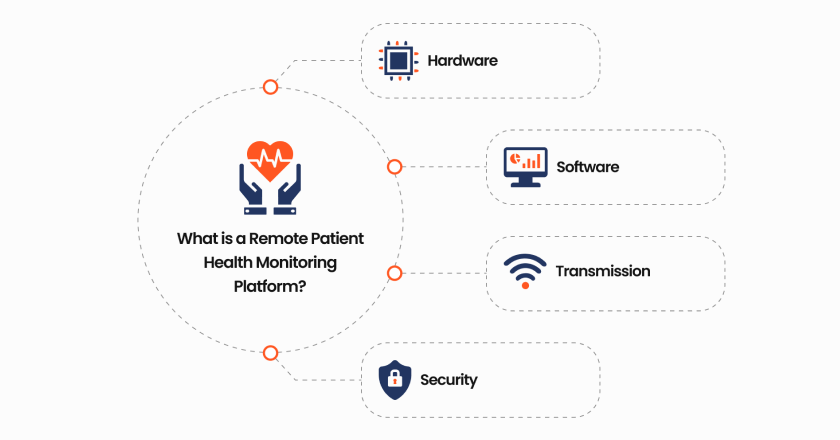The Future of Health Care: Remote Client Checking Simplified
As medical care proceeds to advance, one area that holds enormous assurance is remote person tracking. With an emphasis on boosting patient end results and enhancing medical care delivery, remote surveillance is poised to revolutionize the market.
Advantages of Remote Individual Monitoring
Remote person surveillance presents a multitude of benefits for both healthcare suppliers and patients alike. One substantial benefit is the capacity to continuously keep track of people' crucial signs and health data remotely. This real-time surveillance enables doctor to detect any type of concerning trends or changes promptly, causing early interventions and possibly preventing medical emergency situations. In addition, remote individual monitoring improves the total top quality of care by supplying a more thorough and holistic view of people' wellness condition beyond traditional in-person visits.
Moreover, remote client monitoring can bring about improved individual end results and contentment. Individuals can enjoy the benefit of obtaining treatment in the comfort of their own homes while still knowing that their health is being carefully kept an eye on. This can result in boosted client involvement and adherence to treatment plans, eventually leading to better wellness end results. Moreover, remote tracking can minimize the requirement for frequent health center sees, lowering healthcare prices for both individuals and suppliers. On the whole, the benefits of remote individual monitoring are clear, making it a useful tool in modern healthcare delivery.
Innovation Driving Remote Surveillance
In the realm of contemporary medical care, technical advancements play a critical role in driving the development and effectiveness of remote client tracking. The integration of ingenious technologies such as wearable devices, mobile applications, and cloud-based systems has actually transformed the way doctor from another location keep an eye on and handle individual health - remote patient monitoring platform. These modern technologies enable constant real-time tracking of important signs, medicine adherence, and other essential health data, enabling timely interventions and individualized treatment strategies
One key modern technology driving remote monitoring is the Web of Points (IoT), which makes it possible for smooth connection between clinical gadgets and medical care systems. IoT gadgets such as smartwatches and cordless sensing units collect and transmit client information to centralized systems, facilitating remote monitoring from anywhere in the globe. Expert system (AI) and device understanding formulas even more enhance remote tracking by evaluating substantial amounts of person information to spot patterns, predict wellness patterns, and sharp health care service providers to potential concerns.
Effect on Medical Care Distribution
With the integration of advanced innovations driving remote person surveillance, the effect on health care shipment is becoming transformative and progressively extensive. Remote patient surveillance permits healthcare carriers to supply even more positive and customized like clients, leading to enhanced health and wellness outcomes and reduced healthcare facility admissions. By from another location tracking important indications, signs and symptoms, and medication adherence, healthcare specialists can intervene early, preventing problems and improving the total top quality of care.
In addition, remote surveillance boosts access to medical care services, especially for people in underserved or country areas. Patients can receive continuous surveillance and support from their homes, removing the requirement for regular in-person sees. This not only saves time and reduces prices for both clients and healthcare facilities yet also minimizes the danger of exposure to contagious diseases, an important factor to consider in the present health care landscape.
Additionally, remote person tracking makes it possible for health care providers to far better focus on and allocate sources care based on real-time data. By determining risky patients and intervening immediately, health care distribution comes to be much more reliable and efficient, inevitably causing a more lasting and patient-centered health care system.
Improving Client End Results

Furthermore, RPM permits proactive management of chronic problems, minimizing the possibility of intense worsenings and medical facility readmissions. People gain from raised benefit and convenience, as they can receive treatment in their own homes while remaining attached to their medical care carriers. This constant monitoring not only improves person satisfaction yet also cultivates a sense of empowerment and engagement in their own wellness administration.
Future Trends in Remote Surveillance
Accepting sophisticated technologies in remote person surveillance is forming the future landscape of medical care distribution. One significant pattern is the raised usage of wearable tools and sensors to collect real-time data, allowing medical care carriers to keep track of clients constantly without the need for frequent in-person sees.

Additionally, telehealth systems are coming to be much more advanced, allowing for virtual consultations, remote medical diagnosis, and remote client monitoring done in one integrated system (remote patient monitoring software). This holistic strategy to remote tracking is simplifying healthcare delivery, boosting client satisfaction, and inevitably, improving general high quality of care
Conclusion
In final thought, remote person monitoring provides numerous advantages in medical care shipment, driven by advancements in innovation. It has the prospective to improve person outcomes and transform the method health care is supplied. Future trends in remote surveillance will remain to form the landscape of health care, providing opportunities for more tailored and efficient patient care.
Remote person surveillance offers a wide variety of benefits for both medical care companies and clients alike. In addition, remote individual tracking enhances the total top quality of treatment by giving a much more detailed and holistic view of individuals' wellness condition beyond typical in-person brows through.
In addition, remote client surveillance can lead to better patient end results and contentment. Remote individual monitoring allows healthcare suppliers to provide more positive and customized treatment to patients, leading to boosted wellness end results and minimized medical facility admissions. Remote individual surveillance (RPM) plays a substantial role in boosting individual results click reference by providing continuous, real-time data that enables health care carriers to intervene quickly and readjust treatment plans as required.